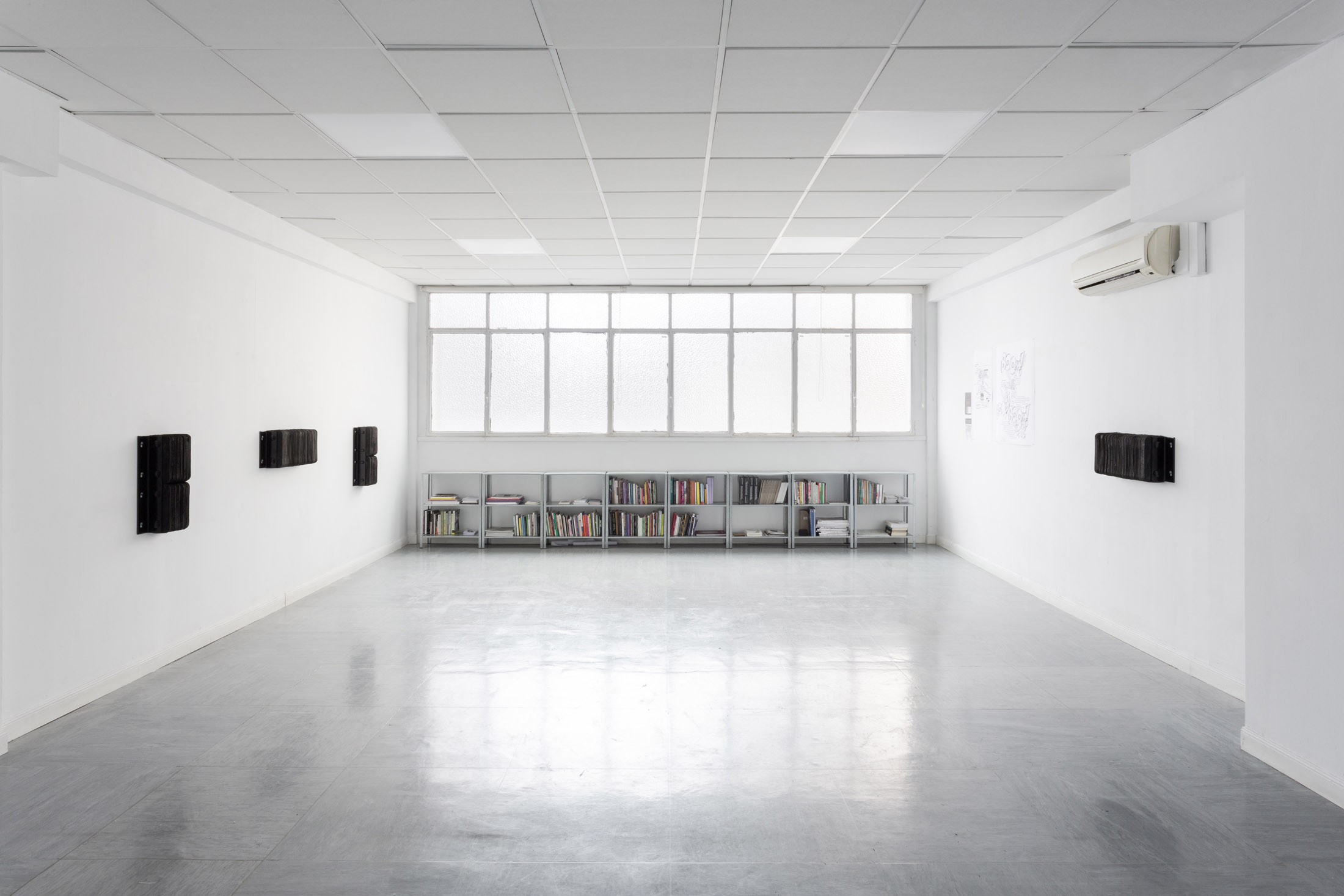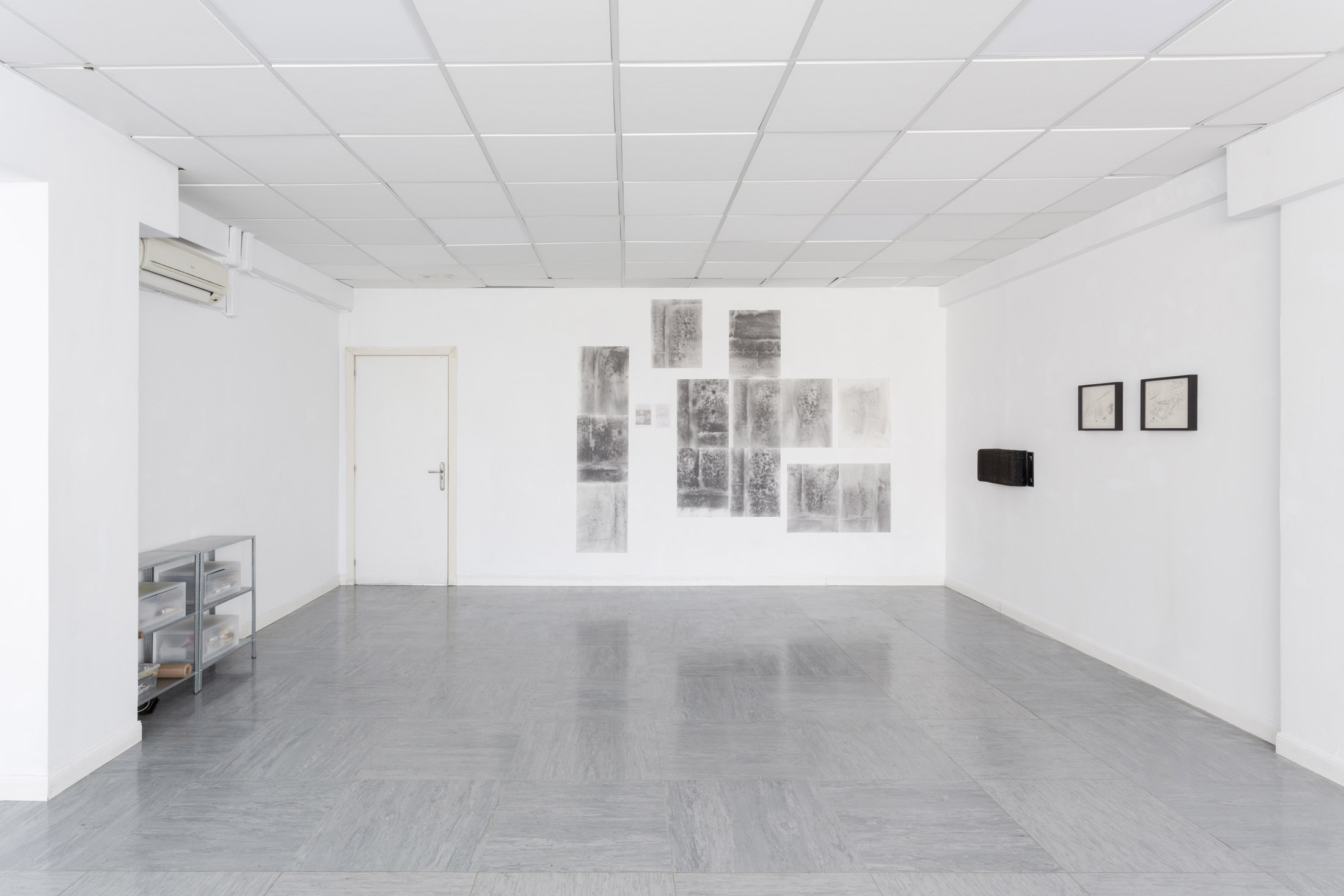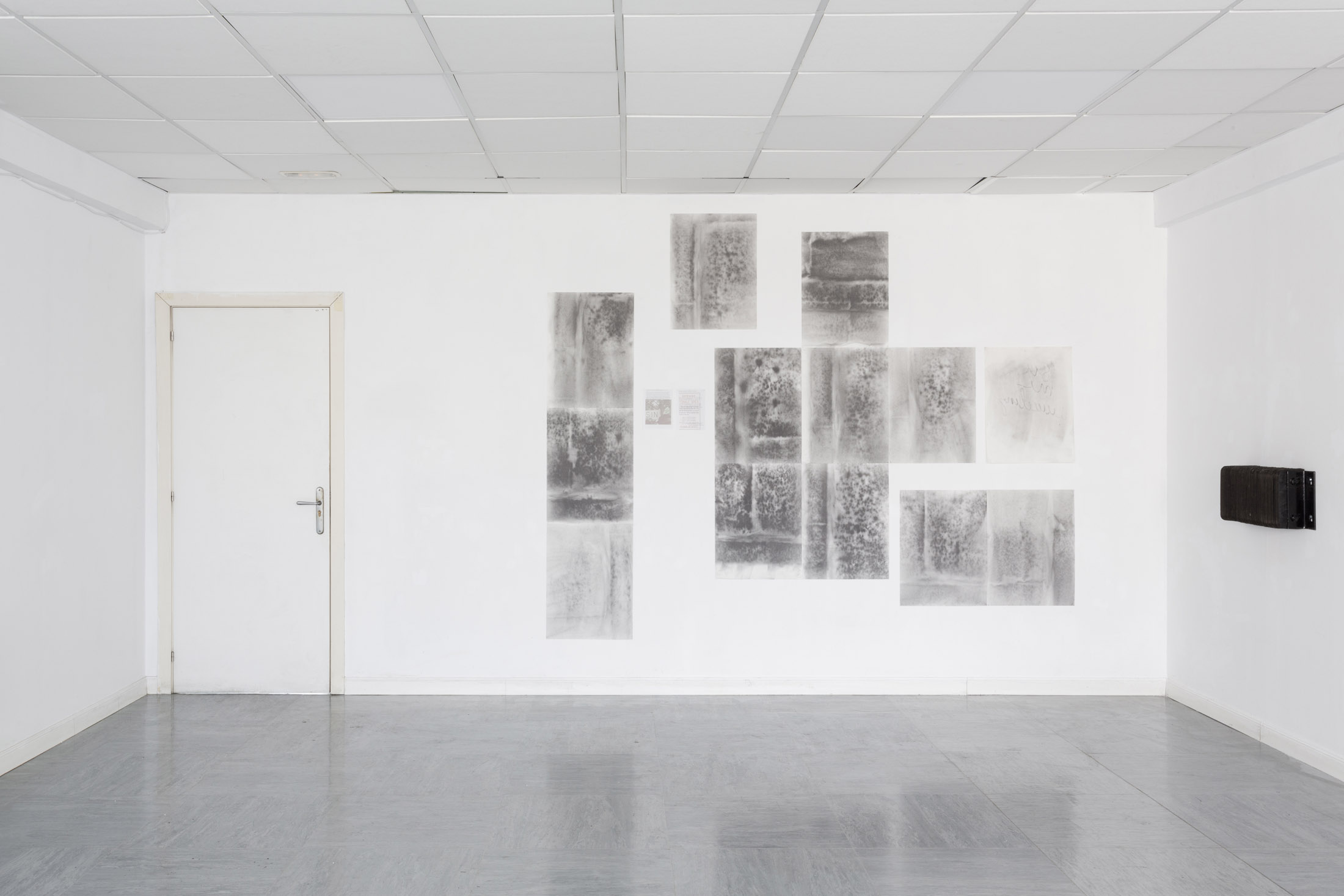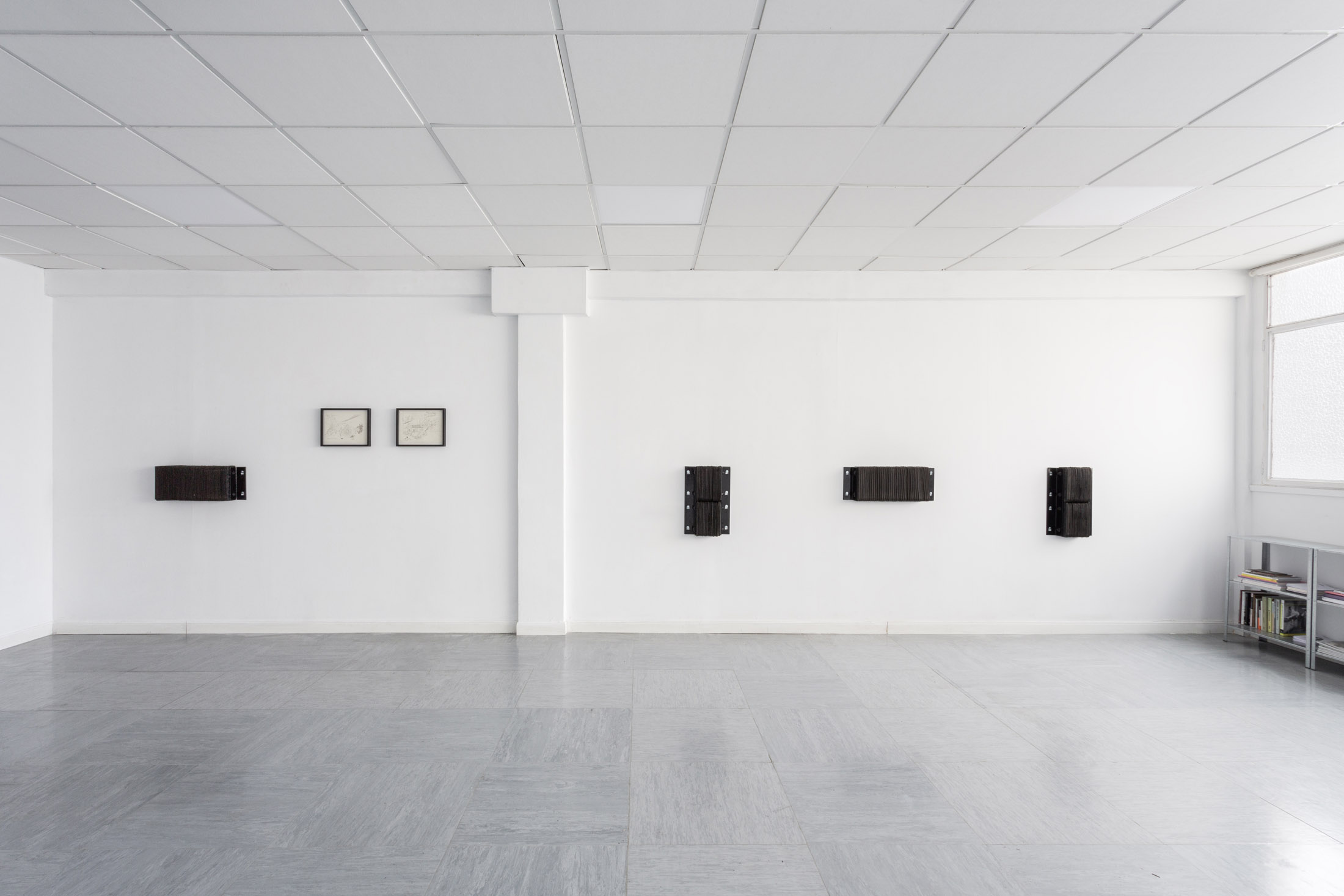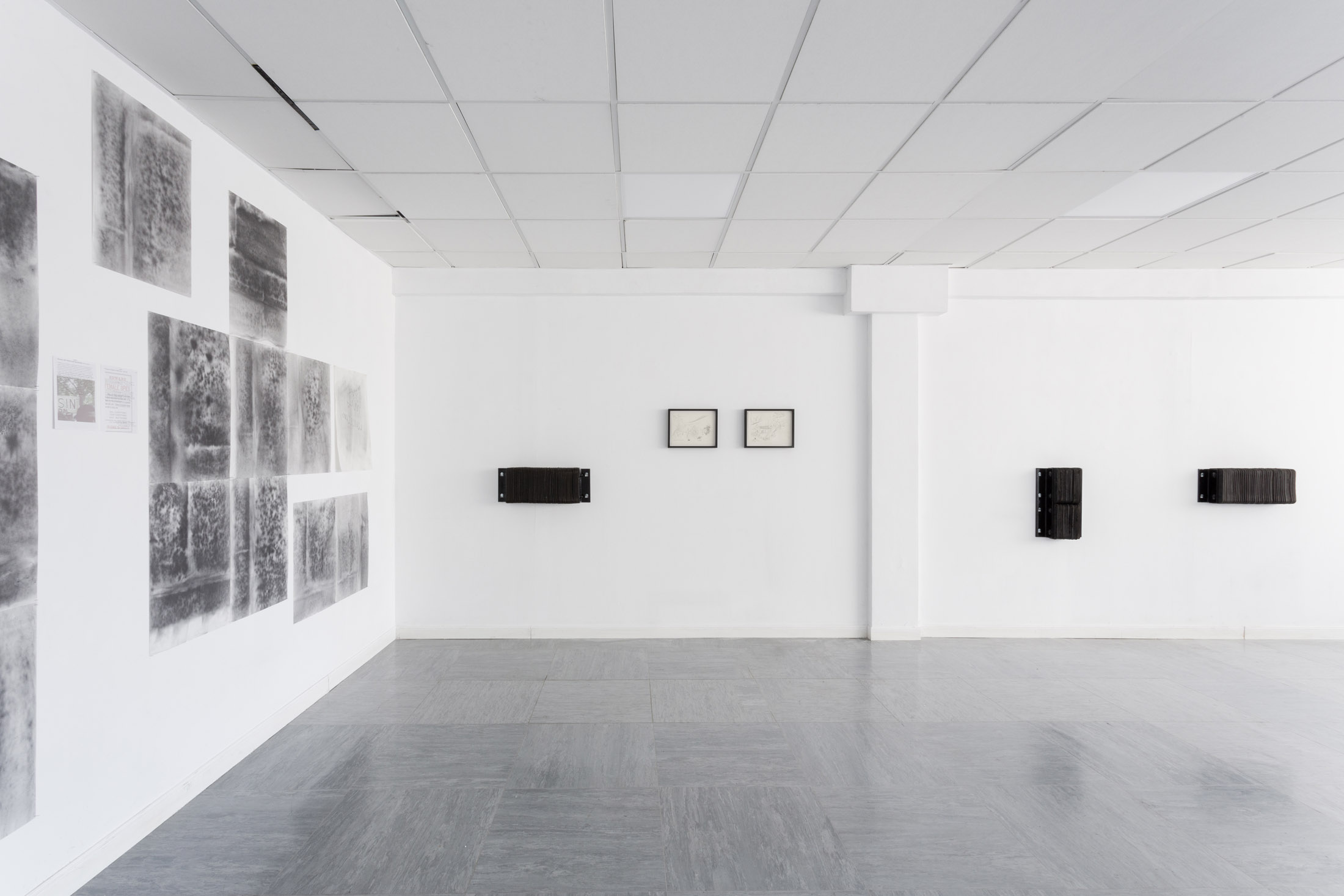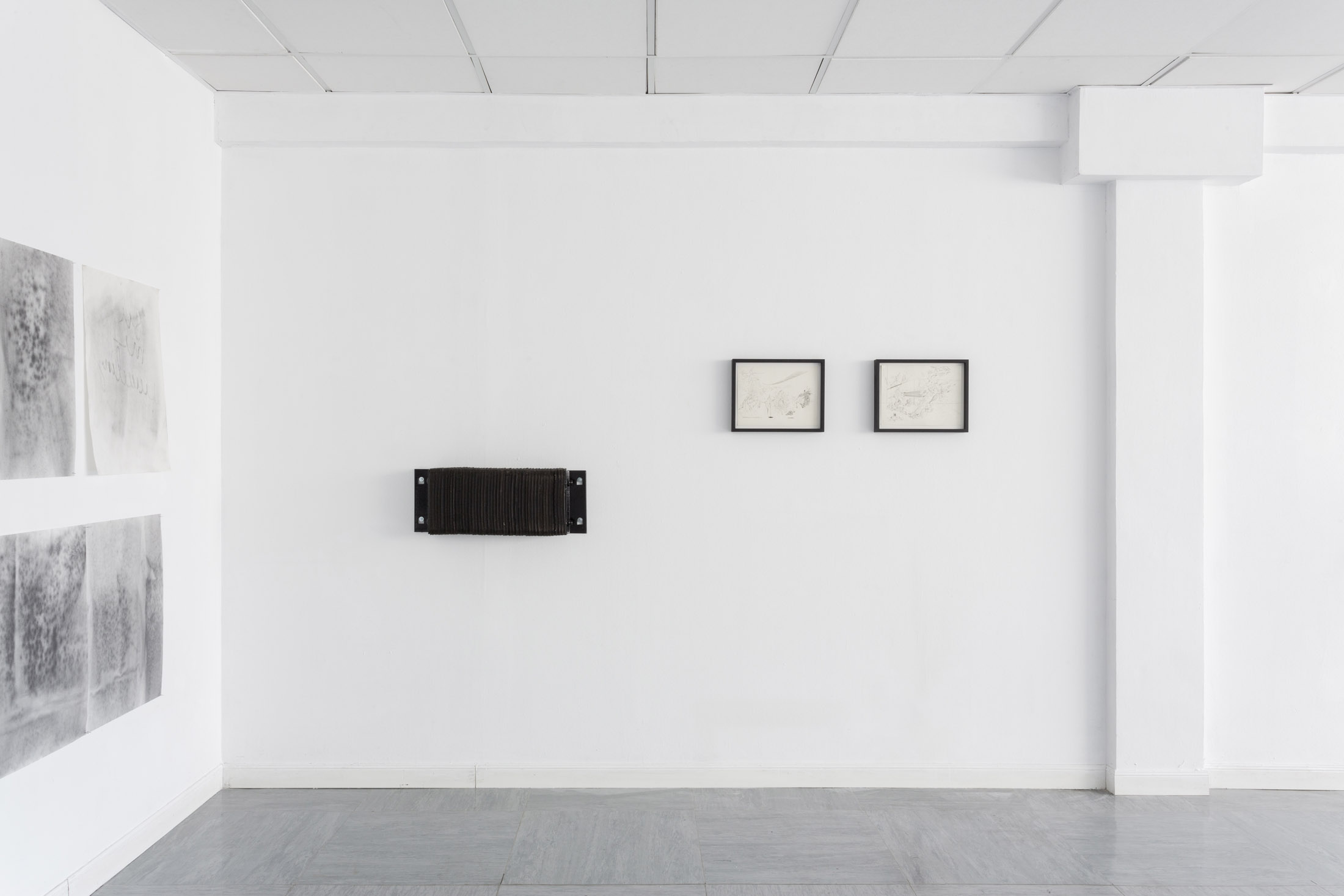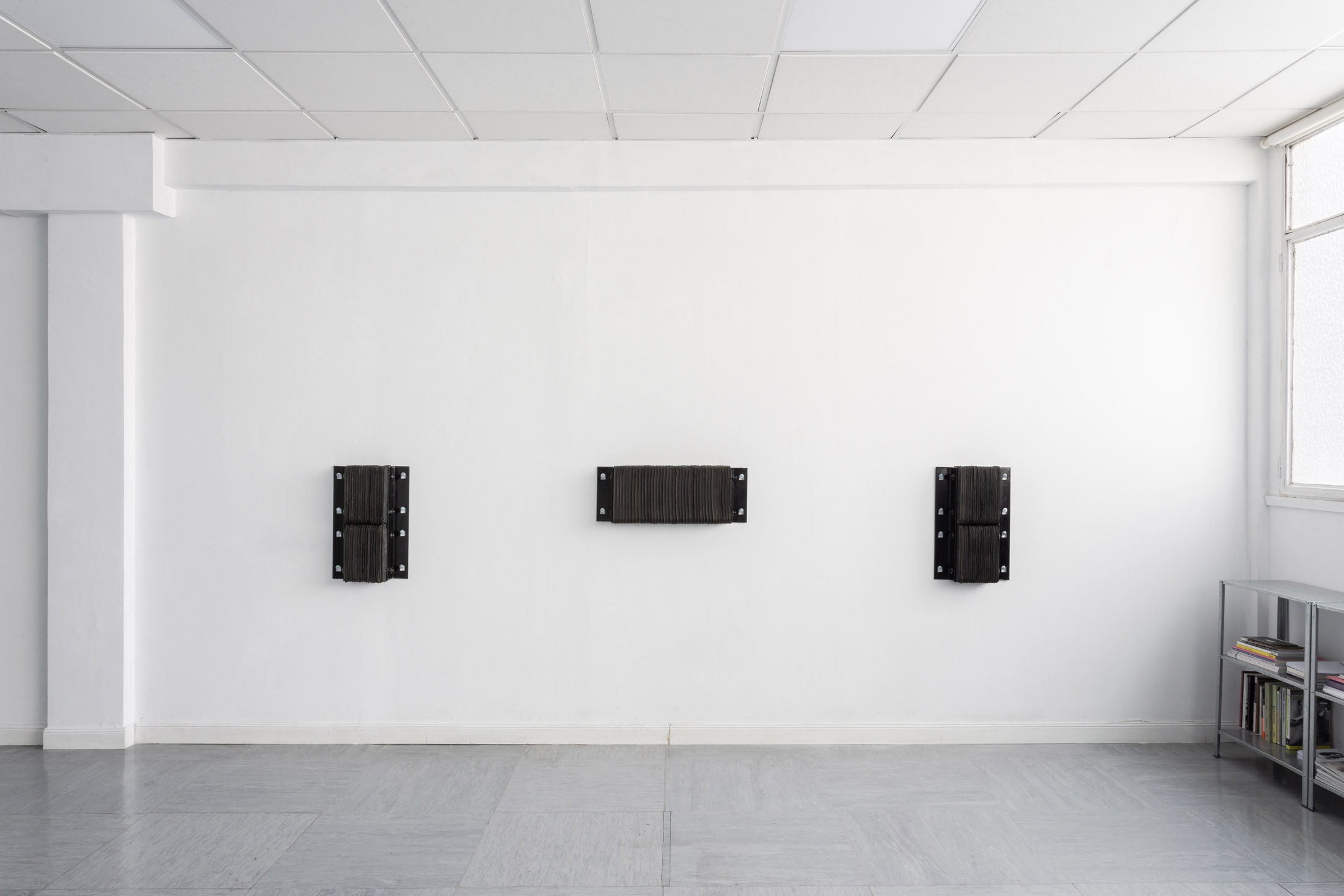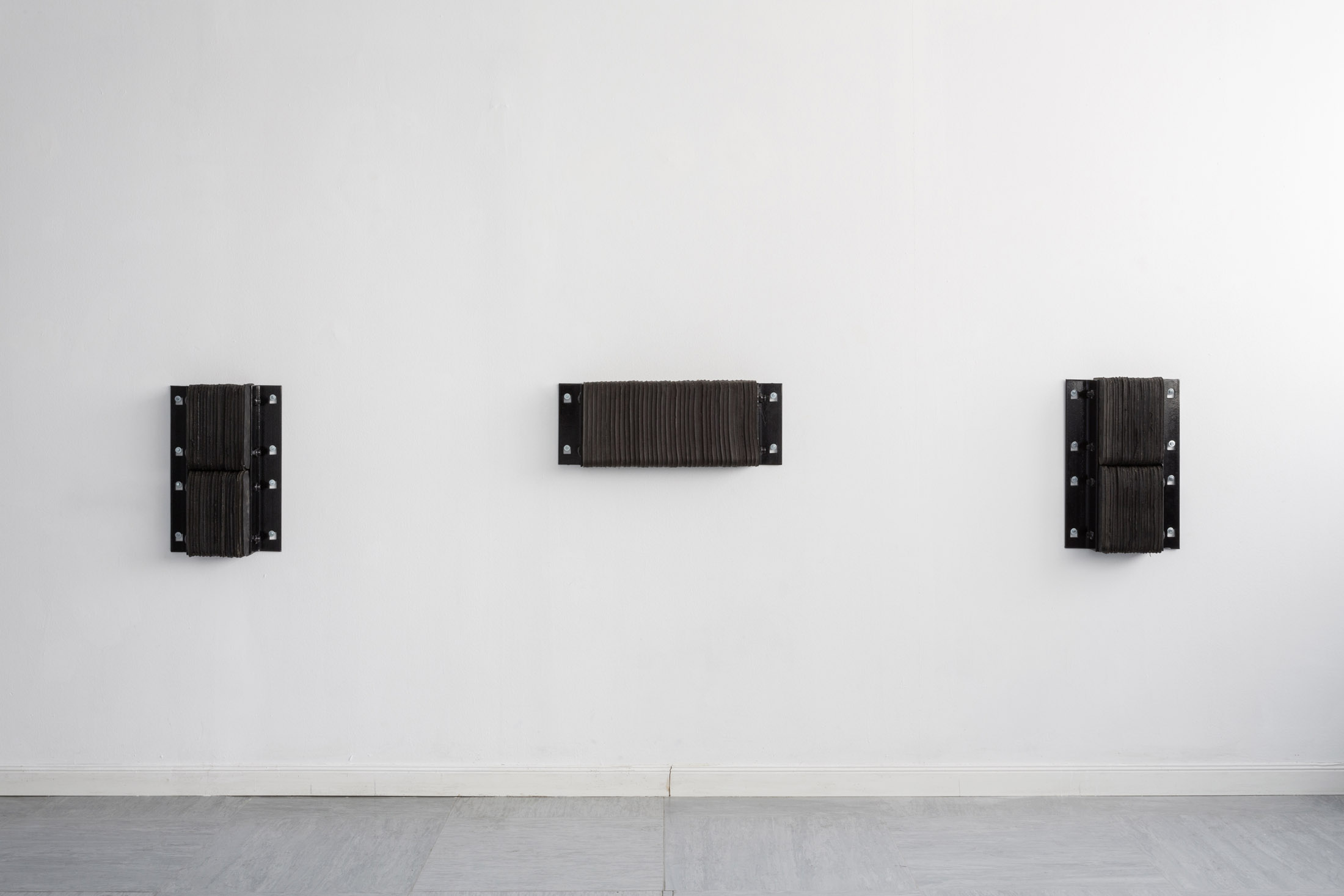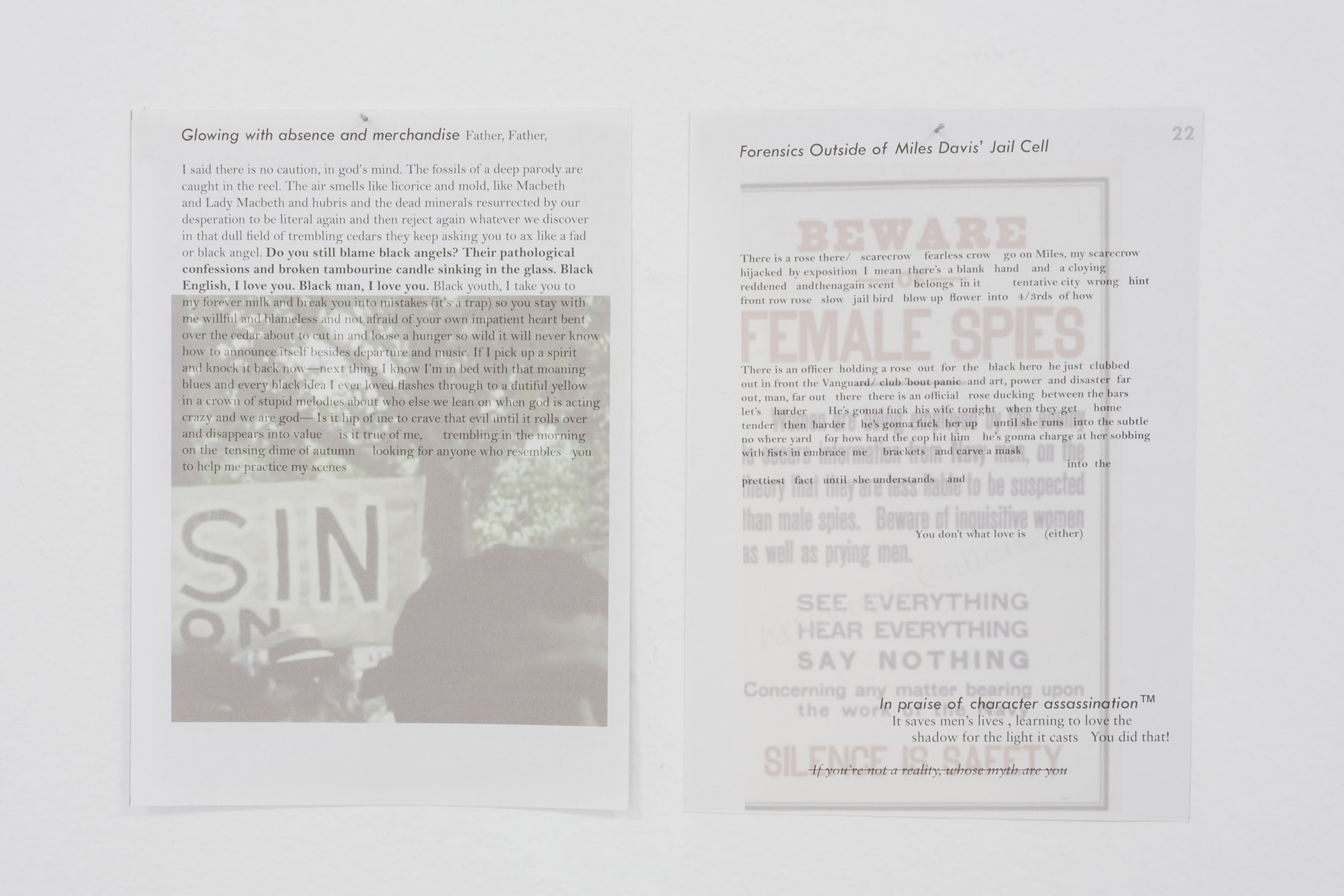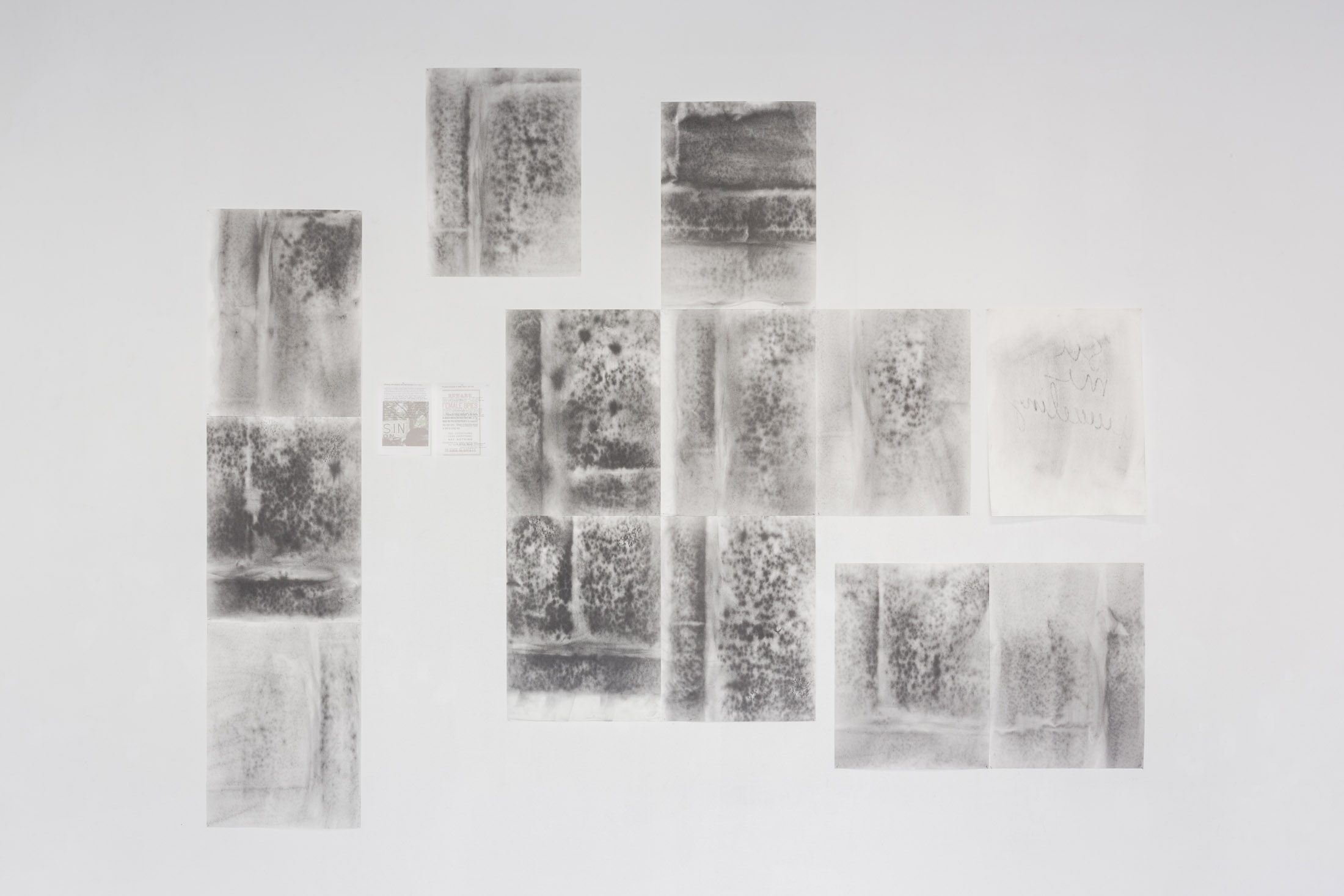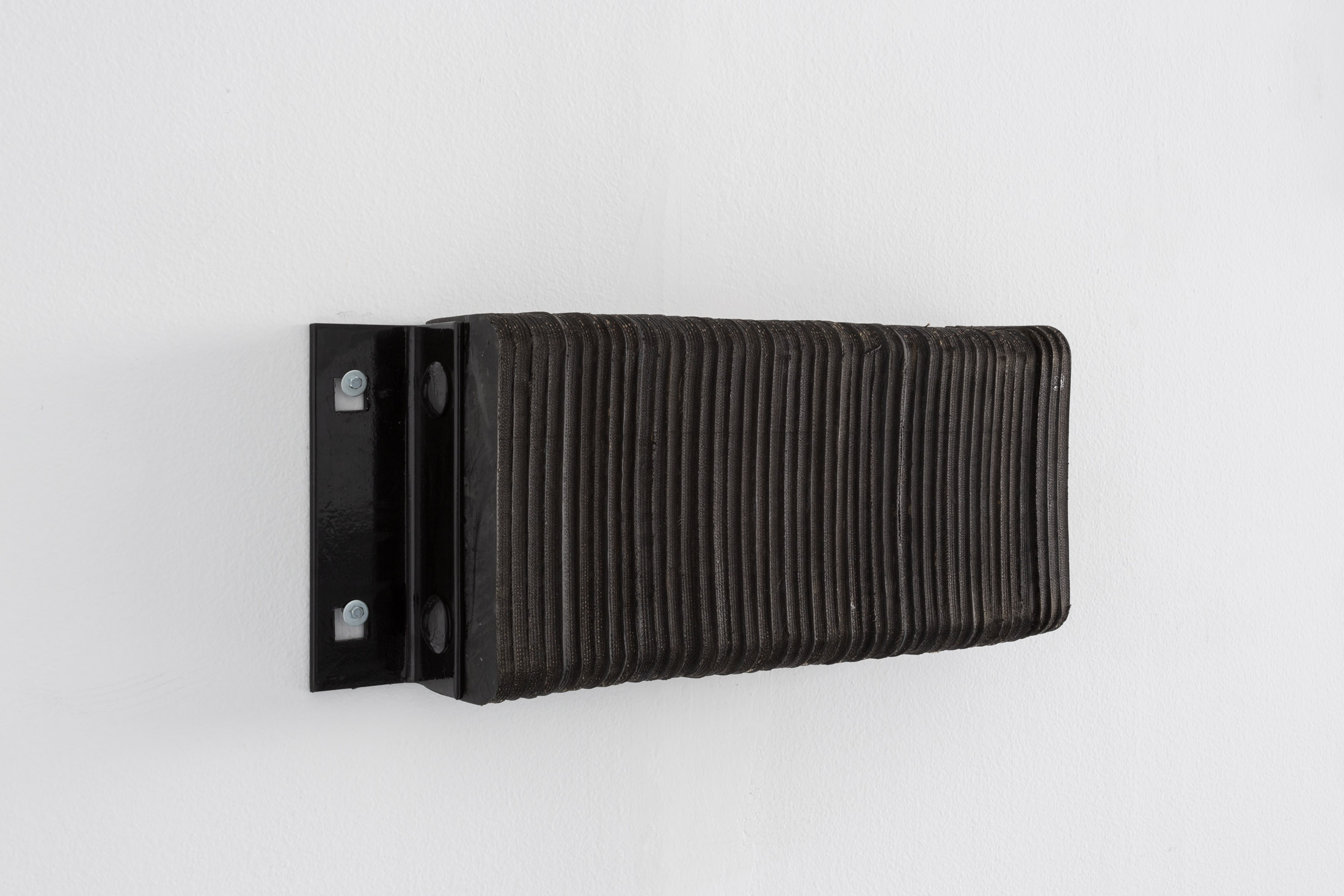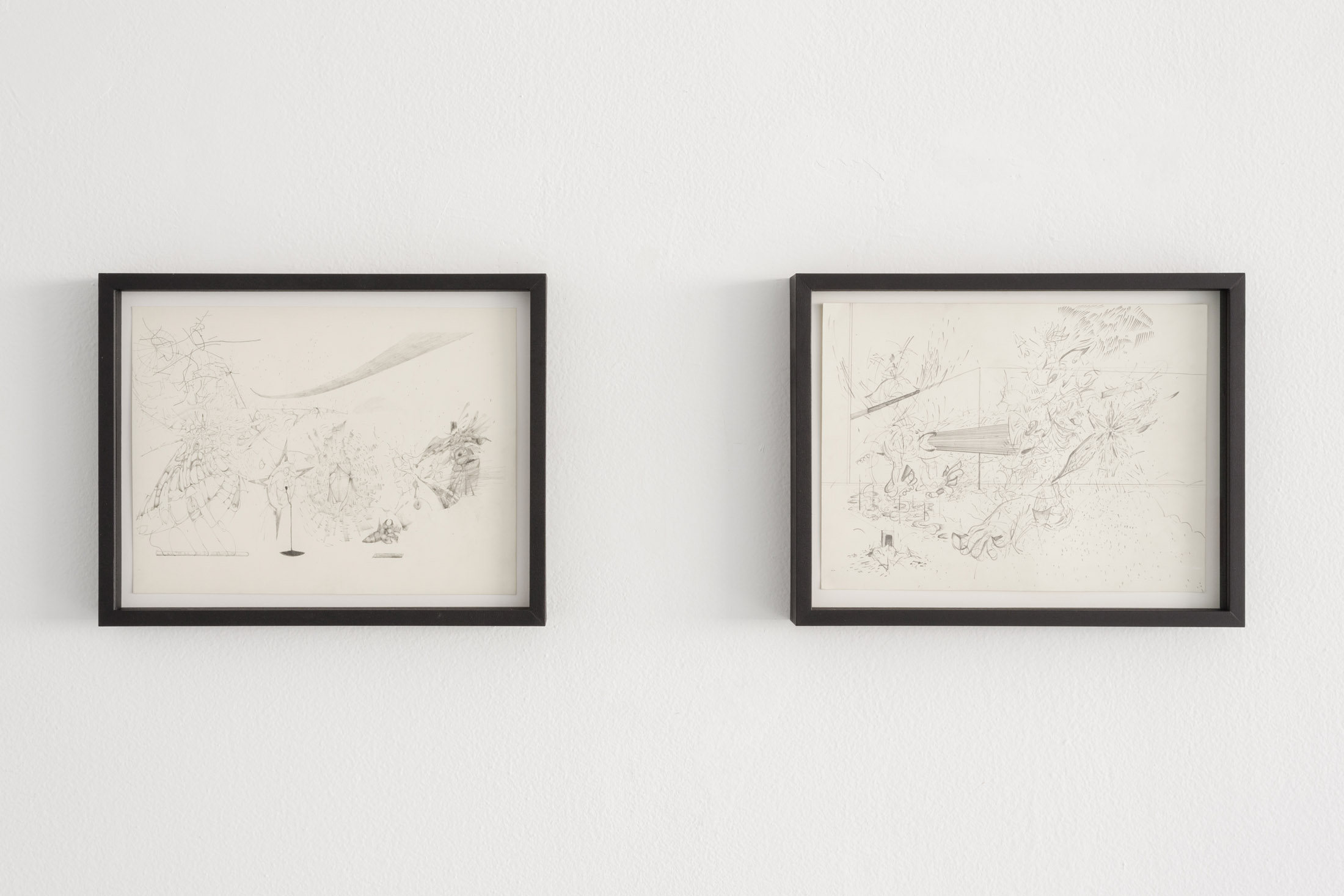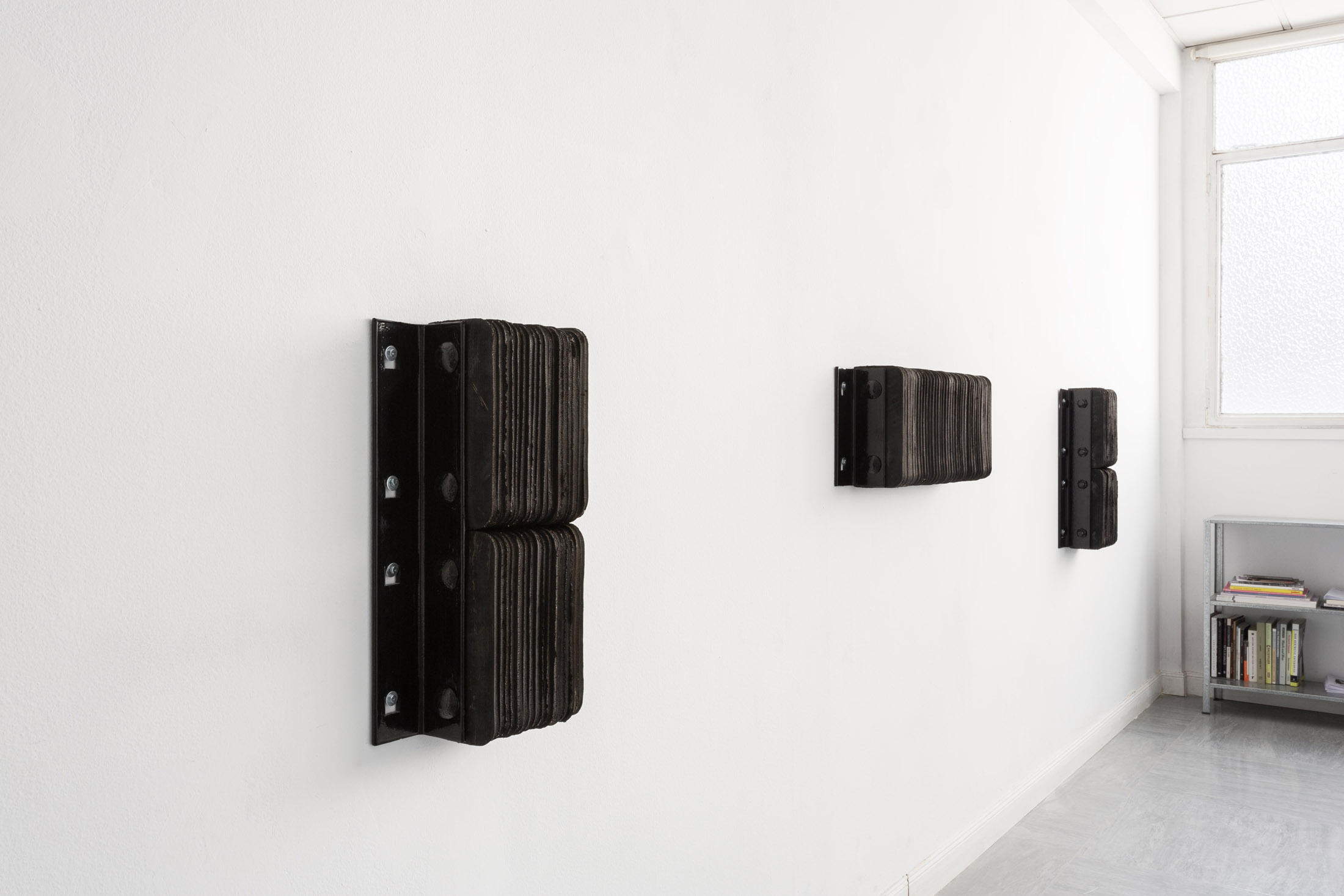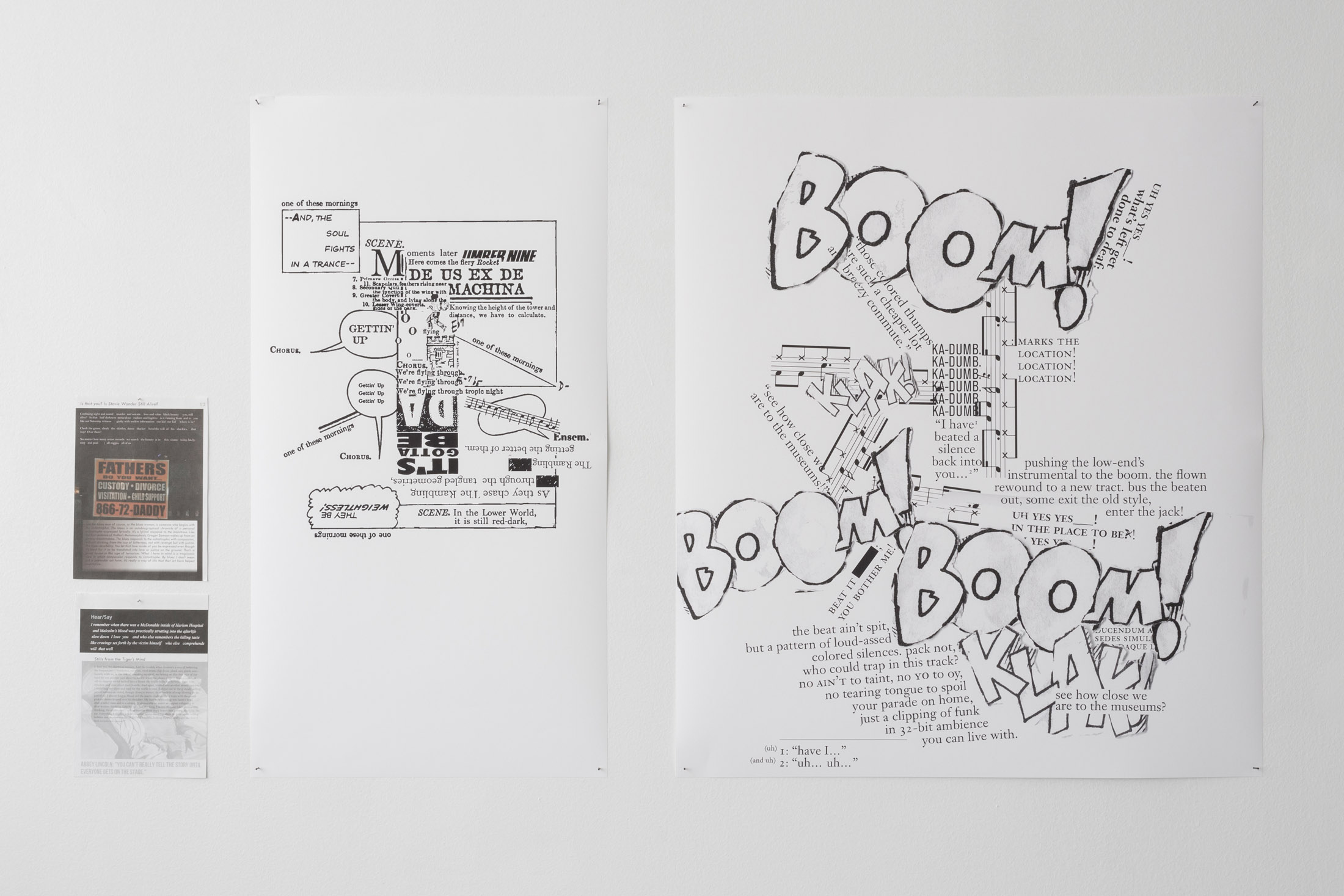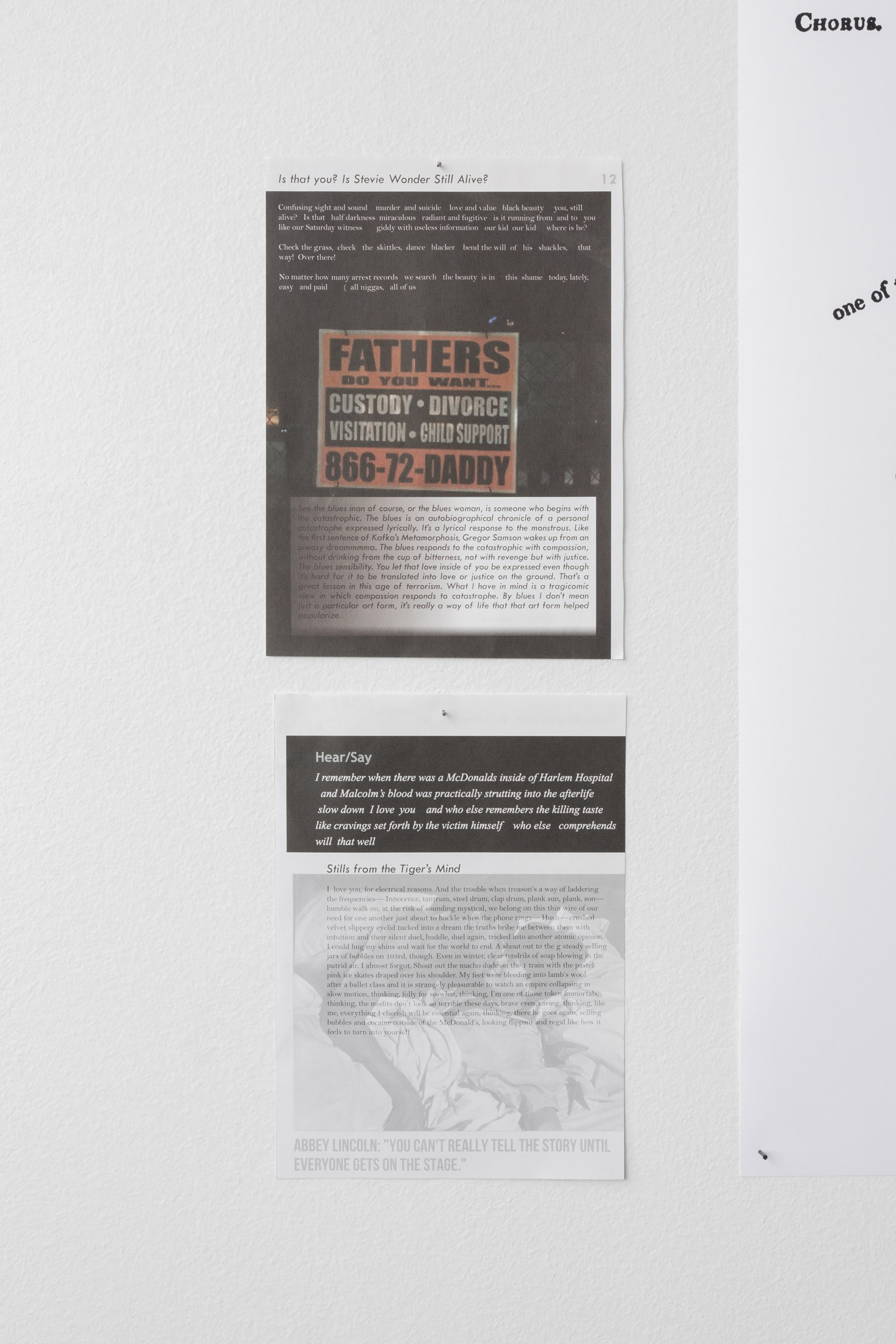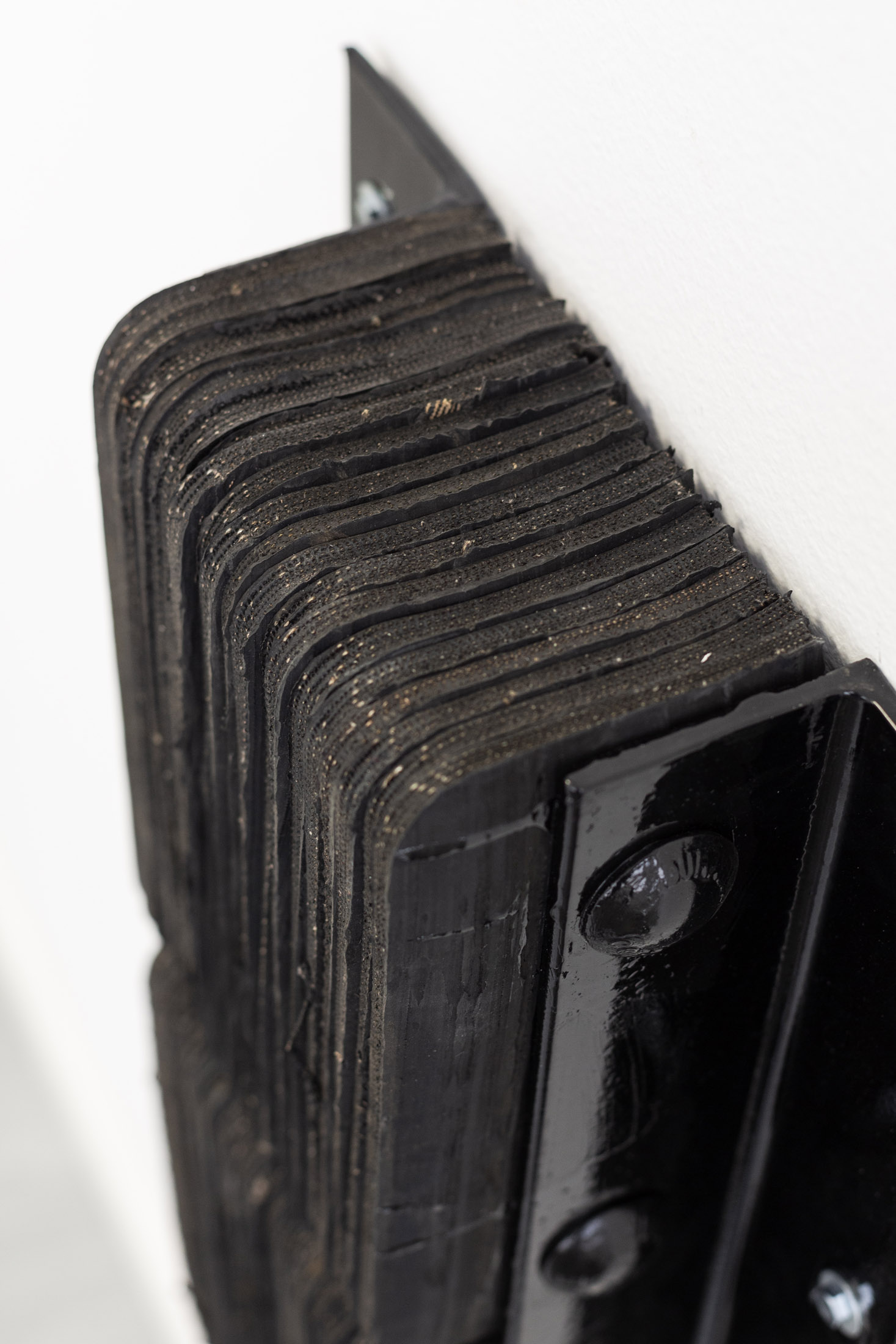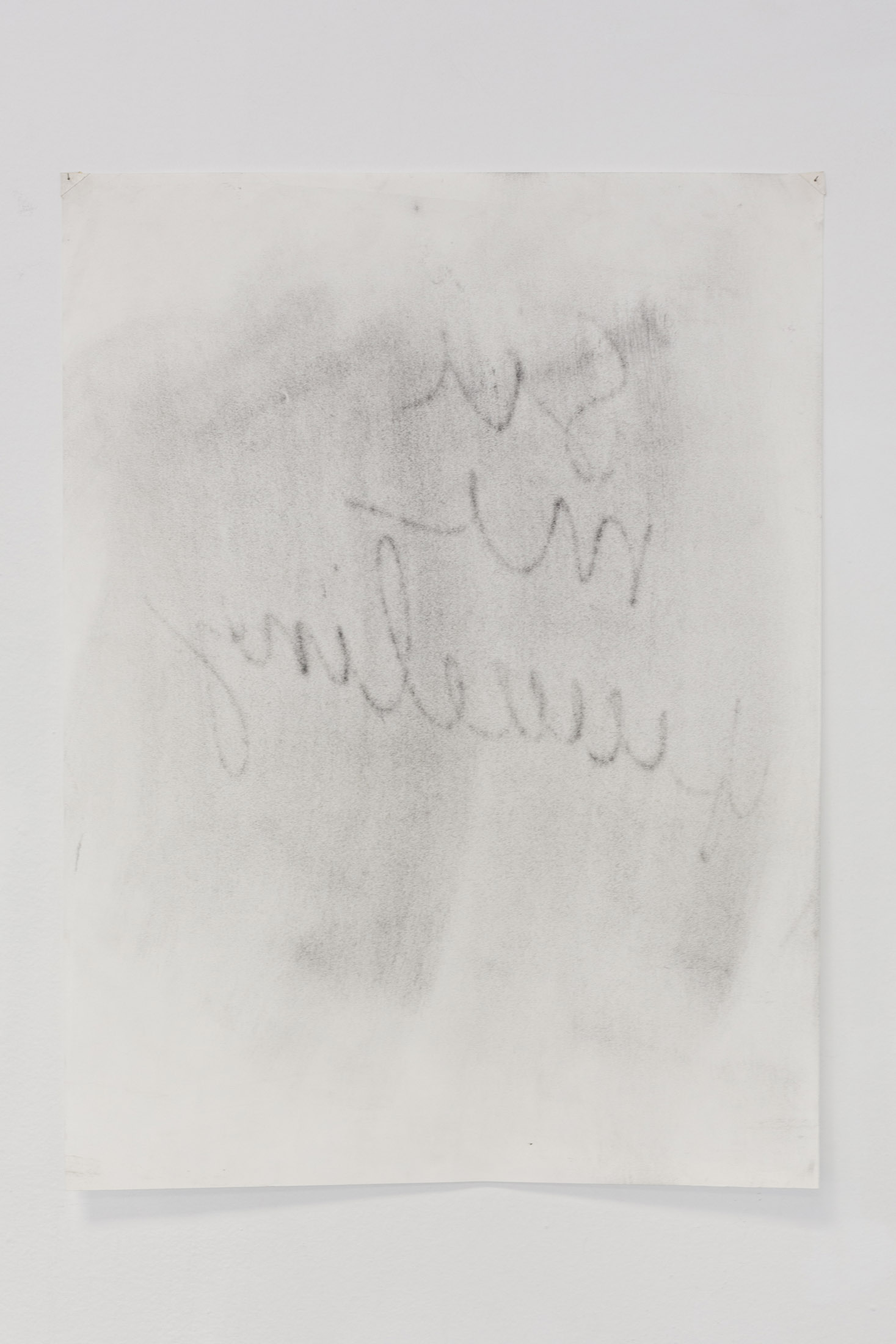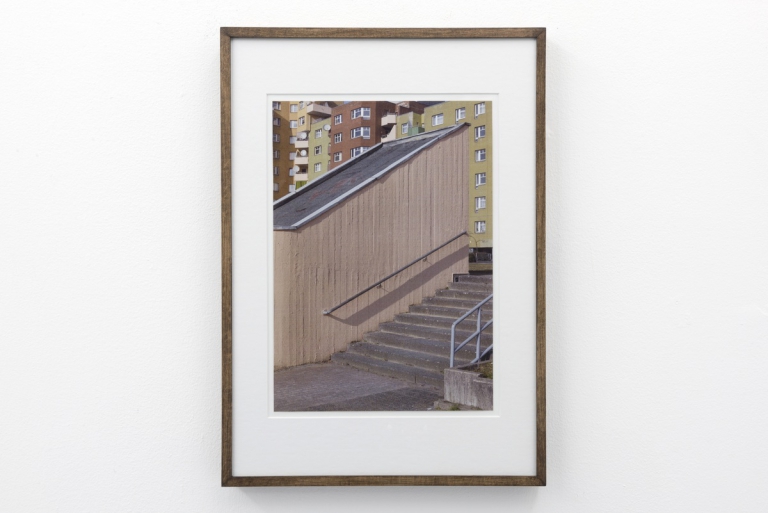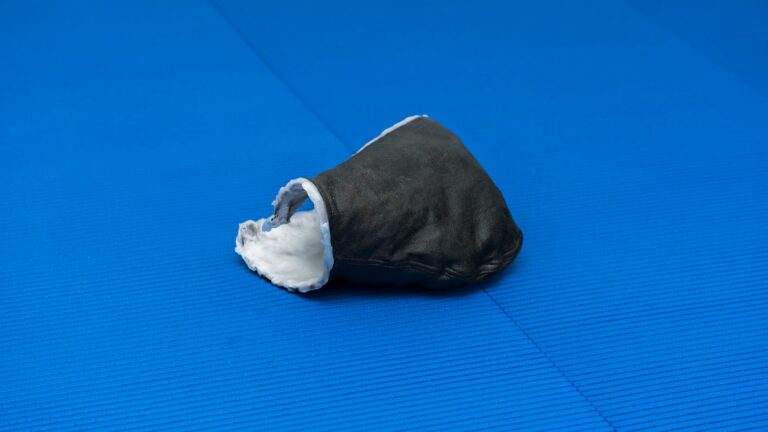Artists: Douglas Kearney, Nikita Gale, Park McArthur, Vijay Masharani, Harmony Holiday
Exhibition title: Creating Its Own Occasions As A Stage Does
Curated by: Bea Ortega Botas and Leto Ybarra
Venue: Juf, Madrid, Spain
Date: May 13 – June 24, 2023
Photography: all images copyright and courtesy of the artists and Juf, Madrid
Douglas Kearney’s performative typography approaches the page as a stage where things happen simultaneously. The typographical screams of That loud-assed colored silence: beat music suggest sound visually. This loud silence invites readers to stage in their heads the sounds they associate with the multiple textures, typefaces from different contexts, and cuts; focusing on parts that may be understood as noise and boosting the signal. By referencing beat music (instrumental non-verbal hip hop compositions), Kearney draws a parallel between the lack of Black speech and gentrification in spaces that have the significations of blackness but no Black presence. Kearney finds in this absence a way to resist detachment and the commodification of Black voice, making the poem impossible to be read aloud. In a similar way, the poem One of these mornings belongs to the closet opera genre —textual operas that are only meant to be “staged” in a reader’s head— complicating opera’s dependance on lyrics distorted by singing, and finding eloquence in scenography and the formal structure of the libretto.
One of the main departing points for this exhibition was to think of the theatrical without returning to some of the common visual languages associated with theatricality, such as grandiloquence, camp performative aesthetics or other expressions of theatricality that we’ve previously engaged with at Juf. Instead, this show is interested in thinking spaces of meaning production and action (a theater, a stage, a spotlight, but also a dock, a curb or a white page) complicating theater’s vernacular languages, as a tentative formula to produce new political and social settings, imaginaries and plots.
Nikita Gale’s rubbings of curbs underscore the artist’s interest in the street as a site for protest. Instead of grandiloquent gestures of dissent, the frottages heighten the haptical politics of public space and social behaviour. The artworks’ intimate dependance to an original location, goes hand in hand with an absolute dislocation that presents them detached from their original context. They function as symbolic site-specifics that expand beyond the geographical: they were originally conceived in relation to a specific place but they are though to be resituated, and in doing so, to carry the accumulated friction and history with them and the proble-matics associated with the absences, exigencies and predictability of street protest and urban life. The stage, the scenery, and the setting function too as symbolic site-specifics.
Five laminated rubber loading-dock bumpers spread throughout the gallery. The mass produced objects that conform Park McAr-thur’s Passive Vibration are used to absorb impact and prevent damage on trucks or buildings by facilitating inclusion and accommodation in space. McArthur’s critical understanding of accommodation —an ongoing relation of exchange that fails to act on the very system and space that makes accommodation of certain bodies and experiences necessary— points to the mechanisms that grant access and the continuity of a process of circulation. Instead of minimizing the effects of the interrelation between object and environment, the bumpers put frictions, traces and absorption at the center of discussions around care, interdependence and sociability. Their minimal aesthetic unfolds considerations about theatricality, sculpture, and bodily reactions that complicate any assumption of autonomy: ideas of weight, dispute, negotiation of space and movement, access and a strong succession of events are associated with the bumpers.
Harmony Holiday’s selection of poems approaches the dynamics between black cultural icons, and white spectators’ violent abstractions and expectations. Holiday focuses on the backstage as a place on the outskirts of intentional performance where uncutted experiences and codes emerge. Black music appears hiding in plain sight in the scenery as it always remains offstage, surrounded by private gestures that conform the sound itself and can’t ever be commodified.
Finally, the two pencil drawings by Vijay Masharani (Punctured by the realization that people prefer to be with their own and Factional Strike) also engage with damage, durability and the sustaining of an energy through different spaces and scenes. Mas-harani explains this somewhat automatic practice of drawing as a way to interpret himself later on; the scrutability of the marks is
thought in relation to race, described by Nahum Chandler as a “system of repetitive marks”. Different figures start to emerge from within a noisy abstract field: voids, drapery, cuts, architecture… They are all pulled, carved out, collided or stretched with cartoonish violence. These in-motion visual resources generate a meaning that evades quick comprehension and expands through a flickering space that comes and goes, in and out a spotlight. A space that frames and determines but is also on the brink of imploding.
Douglas Kearney has published eight books ranging from poetry to essays to libretti. His collection of Bagley Wright Lectures, Optic Subwoof, was released in November 2022. His most recent poetry collection, Sho (Wave Books), is a Griffin Poetry Prize and Minnesota Book Award winner, and a National Book Award, Pen America, Hurston/Wright, Kingsley Tufts, and Big Other Book Award finalist. He is the 2021 recipient of OPERA Ameri-ca’s Campbell Opera Librettist Prize, created and generously funded by librettist/lyricist Mark Campbell. WIRE magazine calls Fodder, a live album featuring Kearney and frequent collaborator, Val-Inc., “Brilliant.”Kearney is a 2022 McKnight Writing Fellow. A Whiting Writer’s and Foundation for Contemporary Arts Cy Twombly awardee with residencies/fellowships from Cave Canem, The Rauschenberg Foundation, and others, he teaches Creative Writing at the University of Minnesota–Twin Cities.
Nikita Gale is an artist living and working in Los Angeles, California. Gale’s work explores the relationship between materials, power, and attention. A key tenet of the artist’s practice is that attention is an ancient and valuable resource that can be manipulated by various means and materials for various ends. The structures that shape attention determine who or what is seen, heard, recorded, remembered, and believed. Gale’s practice examines the ways in which silence, noise, and visibility function as political positions and conditions. The artist’s work has recently been exhibited at Chisenhale (London); LAXART (Los Angeles); 52 Walker (New York); MoMA PS1 (New York); Kunstraum Kreuzberg (Berlin); Swiss Institute (New York); California African American Museum (Los Angeles); Cubitt (London); The Studio Museum in Harlem (New York); and in “Made in L.A. 2018” at the Hammer Museum (Los Angeles). Gale is represented by Commonwealth & Council (Los Angeles), Reyes | Finn (Detroit), and 56 Henry (New York).
Park McArthur is an artist who experiments with personal and social meanings of debility, delay and dependency under the guidance and instruction of disability. With Constantina Zavitsanos, McArthur has exhibited artworks and published texts and McArthur’s recent solo shows include among others Kunsthalle Bern, Switzerland and The Museum of Modern Art, New York.
Harmony Holiday is a dancer, archivist, filmmaker and the author of five collections of poetry including Hollywood Forever and Maafa. Holiday curates a standing archive space for griot poetics and a performance series at the L.A. venue 2220arts. She has received the Motherwell Prize from Fence Books, a Ruth Lilly fellowship, a NYFA fellowship, a Schomburg fellowship, a California Book Award, a research fellowship from Harvard and a teaching fellowship from UC Berkeley. She is currently working on a collection of essays for Duke University Press, a biography of Abbey Lincoln and an exhibition on backstage culture for the Kitchen in New York, in addition to other writing, film and curatorial projects.
Vijay Masharani is an artist and writer. He received his MA in Race, Ethnicity, and Postcolonial Studies from University College London in 2022, completing a dissertation on the late works of W.E.B Du Bois. Recent solo and two-person exhibitions include: Permanent Water at hatred 2, Brooklyn (2023); Triage at Clima, Milan (2021); #38: Gas, Honey with Raza Kazmi at Museum Gallery, Brooklyn (2019). His critical writing has appeared in artforum, BOMB, Momus, X—TRA Magazine, and elsewhere. He is represented by Clima, Milan.


